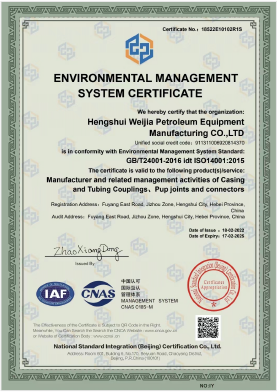- Afrikaans
- Albanian
- Amharic
- Arabic
- Armenian
- Azerbaijani
- Basque
- Belarusian
- Bengali
- Bosnian
- Bulgarian
- Catalan
- Cebuano
- Corsican
- Croatian
- Czech
- Danish
- Dutch
- English
- Esperanto
- Estonian
- Finnish
- French
- Frisian
- Galician
- Georgian
- German
- Greek
- Gujarati
- Haitian Creole
- hausa
- hawaiian
- Hebrew
- Hindi
- Miao
- Hungarian
- Icelandic
- igbo
- Indonesian
- irish
- Italian
- Japanese
- Javanese
- Kannada
- kazakh
- Khmer
- Rwandese
- Korean
- Kurdish
- Kyrgyz
- Lao
- Latin
- Latvian
- Lithuanian
- Luxembourgish
- Macedonian
- Malgashi
- Malay
- Malayalam
- Maltese
- Maori
- Marathi
- Mongolian
- Myanmar
- Nepali
- Norwegian
- Norwegian
- Occitan
- Pashto
- Persian
- Polish
- Portuguese
- Punjabi
- Romanian
- Russian
- Samoan
- Scottish Gaelic
- Serbian
- Sesotho
- Shona
- Sindhi
- Sinhala
- Slovak
- Slovenian
- Somali
- Spanish
- Sundanese
- Swahili
- Swedish
- Tagalog
- Tajik
- Tamil
- Tatar
- Telugu
- Thai
- Turkish
- Turkmen
- Ukrainian
- Urdu
- Uighur
- Uzbek
- Vietnamese
- Welsh
- Bantu
- Yiddish
- Yoruba
- Zulu
Understanding Seamless Pipes and Their Applications in Modern Industries
The Versatility of Seamless Pipes in Modern Industries
Seamless pipes, recognized for their robust construction and reliability, have become a cornerstone in numerous industries. Unlike traditional welded pipes, seamless pipes are manufactured without any joints or seams, which greatly enhances their mechanical properties and overall performance. This article explores the various advantages and applications of seamless pipes, shedding light on their roles in contemporary engineering and construction.
Manufacturing Process
The manufacturing process of seamless pipes involves a technique known as extrusion. Hot-rolled steel is forged into a hollow tube, which is then elongated to achieve the desired diameter. This method results in a uniform structure throughout the pipe, minimizing the risk of weaknesses associated with welded joints. The absence of seams makes these pipes less susceptible to corrosion and pressure-induced failures, making them an ideal choice for high-stress applications.
Key Advantages
1. Strength and Durability Seamless pipes exhibit higher resistance to pressure and extreme temperatures compared to their welded counterparts. This strength is vital in industries such as oil and gas, where pipes often endure substantial stress.
2. Corrosion Resistance Given their uniform structure, seamless pipes resist internal and external corrosion effectively. This quality is crucial for transporting corrosive fluids or gases, ensuring operational safety and longevity.
3. Versatility Seamless pipes are available in various materials, including stainless steel, carbon steel, and alloy steel, catering to a wide range of requirements. This versatility allows designers and engineers to select materials that best suit their specific applications.
seamless pipe

4. Improved Fluid Flow The absence of seams minimizes turbulence within the pipe, allowing for smoother and more efficient fluid flow. This benefit is particularly important in systems where rapid and unobstructed transport of liquids or gases is required.
5. Cost-Effectiveness Although the initial cost of seamless pipes may be higher than that of welded pipes, their durability often translates to lower maintenance and replacement costs over time. This makes them a sound investment for long-term projects.
Applications
Seamless pipes find extensive use across various industries. In the oil and gas sector, they are commonly employed for drilling, transportation, and extraction processes, where reliability is paramount. In construction, seamless pipes are utilized for structural applications, providing the necessary strength to sustain heavy loads.
Moreover, the automotive and aerospace industries rely on seamless pipes for manufacturing components that require high strength-to-weight ratios. Additionally, in the chemical processing industry, seamless pipes are preferred for handling hazardous substances, as they reduce the risk of leakage and ensure safe transport.
Conclusion
In summary, seamless pipes exemplify the advancements in material science and engineering that enhance industrial processes. Their superior strength, corrosion resistance, and versatility make them an indispensable choice for a wide array of applications. As industries continue to evolve, the demand for reliable piping solutions will grow, solidifying the role of seamless pipes as a fundamental component in modern infrastructure. Whether in constructing skyscrapers, drilling for oil, or manufacturing high-performance vehicles, seamless pipes will undoubtedly remain integral to shaping the future of engineering and manufacturing.
-
Tubing Pup Joints: Essential Components for Oil and Gas OperationsNewsJul.10,2025
-
Pup Joints: Essential Components for Reliable Drilling OperationsNewsJul.10,2025
-
Pipe Couplings: Connecting Your World EfficientlyNewsJul.10,2025
-
Mastering Oilfield Operations with Quality Tubing and CasingNewsJul.10,2025
-
High-Quality Casing Couplings for Every NeedNewsJul.10,2025
-
Boost Your Drilling Efficiency with Premium Crossover Tools & Seating NipplesNewsJul.10,2025







